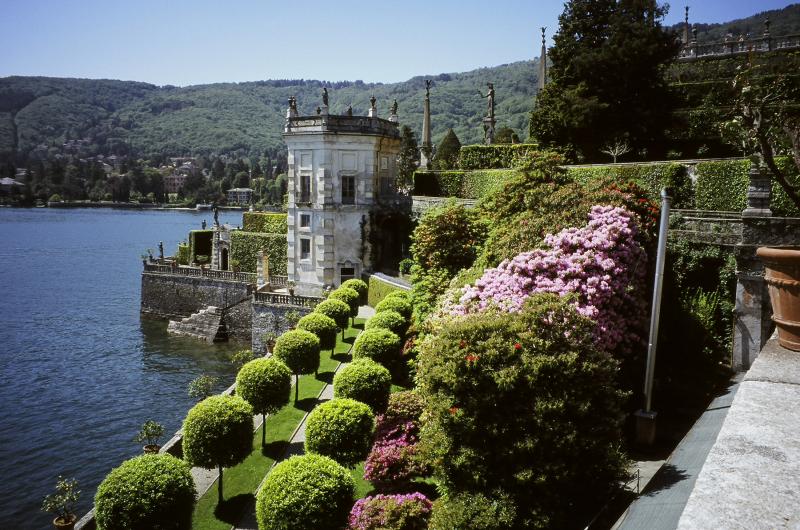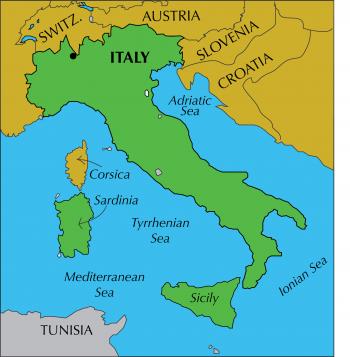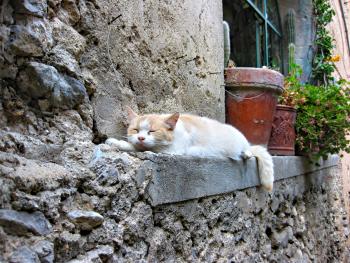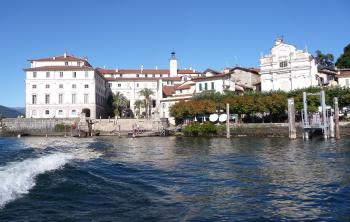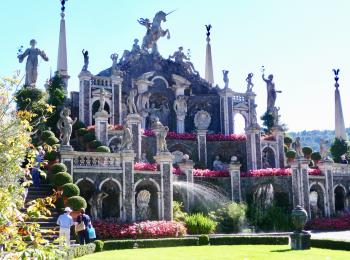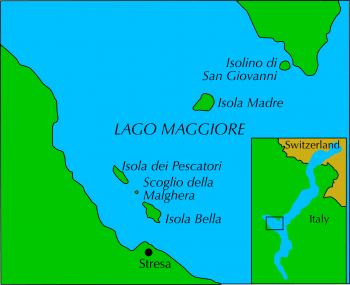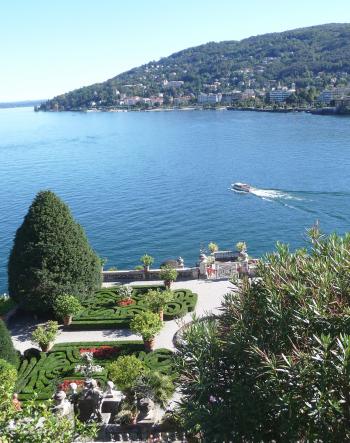Exploring Italy’s Borromean Islands
This article appears on page 6 of the June 2021 issue.
Guidebooks gush about the legendary beauty of northern Italy’s Lago Maggiore.
The Michelin Green Guide’s editors award the lake three stars — worth a journey — and call it “the most famous of the Italian lakes... at times both majestic and wild.”
Especially beguiling, the guidebook continues, are the three Borromean Islands, Bella, Madre and Pescatori, which lie, locked in the lake’s blue embrace, just offshore from the Belle Époque resort town of Stresa.
Other guidebooks, and word of mouth from visitors, laud Maggiore’s privileged position, surrounded by soaring Alps, its balmy microclimate, in which villas bloom and gardens flourish, and its pastel villages that dot the shores, but not a single book I’ve read mentions the most surprising aspect of Lago Maggiore: the cats of the Borromean Islands.
First impressions
In the pearly light of a January afternoon, the islands slept. Gone for the winter were the day-tripping hordes. The baroque palace on Isola Bella was closed for the season, and the ferry didn’t even serve Isola Madre, as that island contains only a private villa, a garden (magnificent and extensive though it is) and little else.
My partner, Susan, and I were the only passengers from the 3 p.m. ferry to Isola dei Pescatori (Fishermen’s Island) to hop ashore, wanting to see for ourselves if this really was the “most ordinary” of the three islands, as we’d read.
The island smelled like most other Italian places in winter — the bitterness of espresso, the bite of wood smoke, the mineral grit of wet cobblestones. Though seemingly deserted, this place must be alive, I thought; someone was there to brew the coffee and light the fires.
Pescatori is essentially flat, unlike sisters Madre and Bella. Measuring a scant 400 yards long by about 100 wide, it exudes a scruffy charm, the stuccoed houses, finished in whitewash or pale pastel, hunched together. Streets are nonexistent, as are cars, so the only way to get around is on foot. Only a handful of narrow paths stairstep up from the lake to the island’s low spine.
The lakefront esplanade was open to the pale winter sun, and as we made our way along the shore, the sun struggled to pierce the mist that makes Maggiore look like an Impressionist painting most days of the year.
An unexpected find
Rounding a corner, following one tiny alleyway leading to an even narrower one, we came across someone’s sunny front step chockablock with... cats! Haunch to haunch like kernels on an ear of corn they dozed, tails tucked in, paws together, lying on a green doormat that protected their furry bellies from the cold cobbles.
Three of them appeared to be littermates — a couple of black-and-brown striped specimens, looking pleasingly plump, and a white-breasted cat who opened her eyes a slit just to assure herself we meant no harm. A fourth kitty, pure black, bookended the litter.
As we continued through the maze of alleyways, we soon reached the far side of the island, then made our way along the side that faced the open water, the opposite shore rising in the distance.
Hello. What’s this? More cats?! Wait a minute. Are these the same ones we just saw? No, these are gray, and tabby-coated, and there’s a pure-white one.
Clearly, something was going on here. We counted seven cats going about their important kitty business — grooming, dozing, yawning, slinking, stalking and pondering the world through squinting eyes.
An unaccustomed noise had been droning for several minutes, but we’d only just noticed it. A tiny tractor, with not wheels but tracks like a tank, was being piloted by a workman (the only human we’d see on the island that day) down a ramp of boards leading from the center of the island to the ferry landing. We decided to follow, and another piece of the cat puzzle fell into place.
Beside the lake, on a torn piece of aluminum foil, was a large, cooked fish. Someone must have just set it out — dinner for cats.
There were already three or four there, eating greedily in a way only really hungry animals do. The last time I saw cats that hungry was in Sicily, where they had to scavenge in garbage bins to find sustenance or make do with the kindness of residents who put out leftovers (pasta and fried potatoes, of all things).
These felines, however, were fortunate to live on Fishermen’s Island, because there really are fishermen there… and real fish.
The eating hierarchy was clear. As we watched, the largest cats strolled over to the dinner table and ate without hurry. The timid ones — the small or young or weak — crept in low and soft, lunging for the fish and breaking off a piece before scurrying away to eat their morsel at a safe distance.
Susan put into words my thoughts: “How many cats does this little island have? And do they belong to anyone?”
Returning to Stresa, we tried to find out more. The tourist office lady wasn’t terribly helpful. “Oh, yes, the people of the islands like cats,” she told us. “People live on Isola dei Pescatori all year, but most of the people on Isola Bella come to the mainland during the winter, and they bring their cats with them.”
It all sounded quite proper, really, but life in Italy is usually much messier than that, so I was determined to get to the bottom of this mystery of the Borromean Islands.
Back on Bella
Ten months later, I was back, alone this time. It was early October, a sunny, winsome month, with enough visitors to keep the ferries running and the islands’ tourist stands humming, but not as hot, humid and crowded as in the dead of summer.
With exactly one week of instruction in conversational Italian crammed into my head, thanks to an immersion course in the nearby town of Omegna, I went looking for answers.
From the ferry landing in mainland Stresa, my first stop was not Fishermen’s Island but the busier Isola Bella, 10 minutes away by lake steamer.
Isola Bella means “beautiful island,” but actually it was named for Isabella d’Adda, wife of Count Carlo Borromeo III, who got the construction of the villa going in 1632.
As the boat slid smoothly to the dock, the island’s most renowned sight was revealed: the Palazzo Borromeo, a baroque villa anchoring the northwestern tip of the island.
Ashore, it took only minutes to scope out the lay of the land.
Inside the 4-story, marble-clad palace were soaring ceilings and walls crammed with low-relief plaster sculptures.
A pretty palace
During our January visit, the palace had been closed for the winter, but this time, a steady stream of visitors passed through the entry door, snaking through the 23 or so rooms on two floors that were open to the public.
Inside, I gawped at grand staircases and a seemingly endless succession of richly furnished rooms. Paintings by minor Italian masters vied for attention with marble statuary, gilded furniture, neoclassical stuccos and Flemish tapestries shot through with threads of silver and gold.
One of the rooms, Sala di Napoleone (Napoleon’s Room), commemorates the French emperor’s 1797 stay in the villa. Another room, Sala della Musica (the Music Room), is known as the site of the 1935 Stresa Conference, where Foreign Minister Pierre Laval of France, Prime Minister Ramsay MacDonald of Britain and Benito Mussolini of Italy met to pledge themselves to a peaceful Europe. (The agreement was abandoned two months later.)
Descending to the lowest level, I found a series of six rooms tricked out to resemble natural caverns — the so-called Grotto rooms. Vaulted ceilings were encrusted with river rocks, and the floor was paved in rounded stones that provided a foot massage, whether you wanted one or not.
From there, via a spectacular spiral staircase, the multitiered gardens could be reached. Perhaps the palace’s most singular element, this Baroque-era composition comprises 10 interlinked terraces ornamented with stone turrets, fountains and niches.
The central construction immediately captured my eye: a large, tiered, shell-shaped structure surmounted by a depiction of the Borromeo family’s symbol: the unicorn.
These exotic gardens are the realm of the famous white peacocks of Isola Bella. To view one of these magnificent birds, tail unfurled and lit from behind by the sun, with the lake, shoreline villages and Alps in the background, is the stuff of photo-op perfection.
Mystery solved
Back in Stresa, I visited the so-called supermarket, a modest store located in the old town. There I discovered a box near the checkout stands with a neatly printed sign. “Aiutiamo i gatti che vivono liberi,” or “Let’s help the cats who live free.”
The sign went on to note that “a little help will permit the feeding of the cats who live in freedom in accordance with state and regional laws.” Good to know that the Italian state is looking out for kitty welfare!
Finally, the picture had resolved itself. Both Isola Bella and Isola dei Pescatori have semiferal cats, and residents collect donations of food for them. And, sometimes, they treat them to lake fish, thoughtfully spread out on paper or foil — a meal with a view of one of the world’s most perfect vistas.

